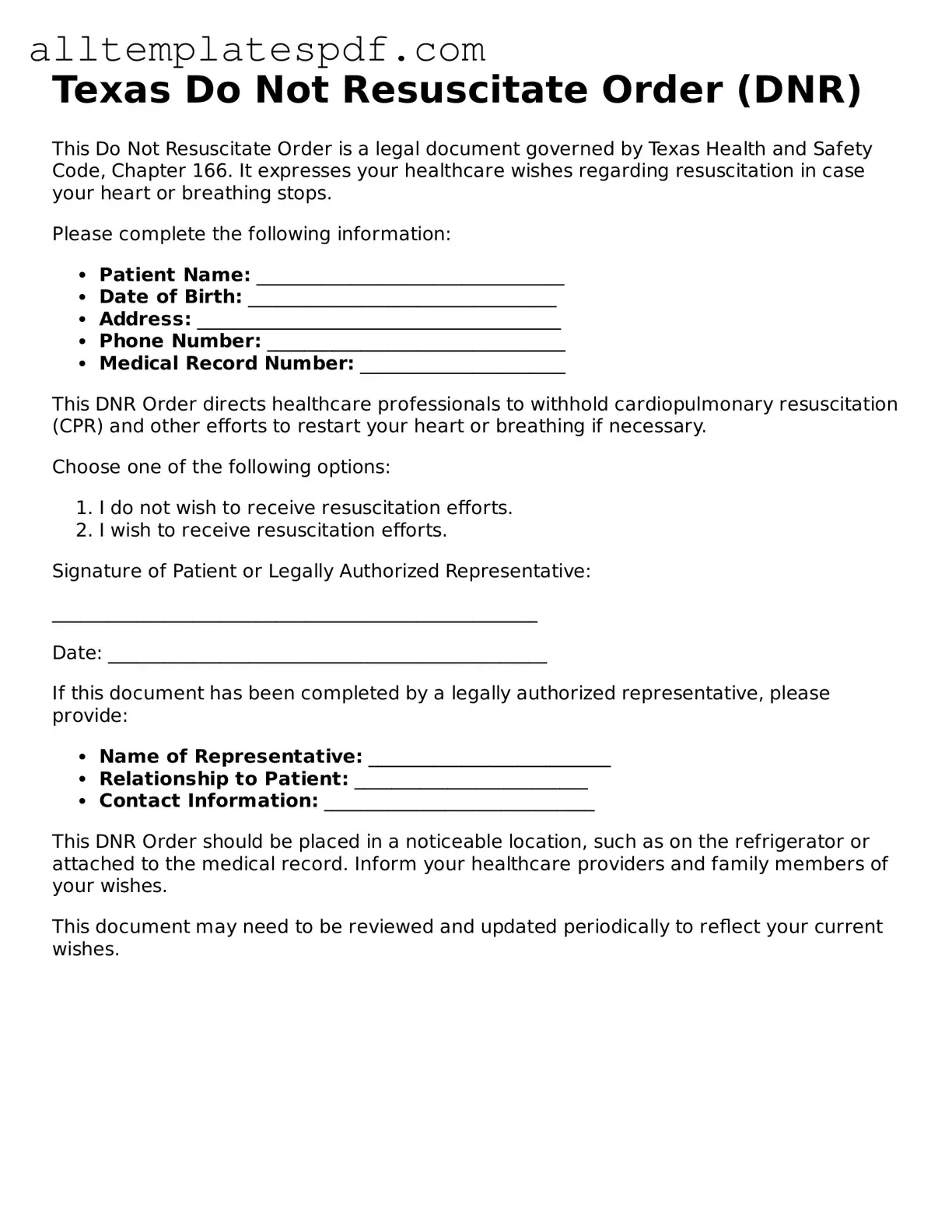Completing a Texas Do Not Resuscitate Order (DNR) form requires careful attention to detail. One common mistake is failing to include the required signatures. The form must be signed by the patient or their legal representative, along with a physician’s signature. Omitting any of these signatures can render the document invalid.
Another frequent error is not providing accurate personal information. The form requires specific details such as the patient’s full name, date of birth, and address. Inaccurate or incomplete information can lead to confusion during a medical emergency.
Some individuals mistakenly believe that verbal consent is sufficient. However, the Texas DNR form must be completed in writing. Relying on a conversation or an informal agreement may not hold up in a medical situation.
Additionally, people often overlook the importance of discussing their wishes with family members. Failing to communicate these decisions can lead to misunderstandings or disagreements among family members during critical moments.
Another mistake involves not keeping the DNR form accessible. It is crucial to have the form readily available in a location where medical personnel can easily find it, such as on the refrigerator or in a medical file. If the form is not accessible, it may not be honored in an emergency.
Finally, individuals sometimes neglect to review and update the DNR form as circumstances change. Life events, such as a change in health status or a shift in personal preferences, may require updates to the document. Regularly reviewing the form ensures that it accurately reflects current wishes.
